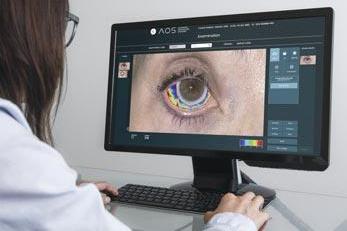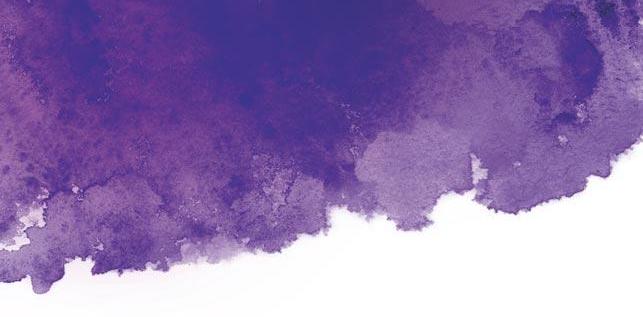
7 minute read
Product profile
from Vision Now 2021
by Vision Now
Placing imaging and grading front and centre
Ben David explains how AOS software can help you to develop a truly patient centric business
Regular assessment of the anterior eye is part of everyday life for anyone working in eye health. But is imaging and objective grading included in these everyday assessments? Without accurate grading and imaging, how is it possible to deliver the eye health experience, both in and out of practice, that patients want and demand?
It is now standard practice to record findings by use of one of the recognised grading systems. The benefits to the eyecare practitioner (ECP) and patient of a grading system are manifold: • Consistent clinical record keeping; • Effective monitoring of ongoing eye health conditions; and • Improved patient adherence to treatment pathways, to name but a few.
One of the main concerns with grading, however, is the level of subjectivity which can lead to inaccuracy and inter clinician variability. Studies have shown reliability and accuracy between clinicians to be as low as 47 per cent*. This figure suggests an accurate, objective alternative would bring about substantial change for the better.
BENEFITS FOR BOTH ECP AND PATIENT Digital imaging of the back of the eye has been incorporated into every posterior assessment for years, and the benefits of doing so are unquestionable. Retinal photography and optical coherence tomography (OCT) are routinely used in practice to aid examinations and educate patients on their eye health. If digital imaging has become part and parcel of posterior examinations, then why is this not the case for many anterior assessments?
Visually showing the patient the blepharitis on their lashes, or the level of staining on the cornea, has the same benefits as diabetic retinopathy from a fundus image, or wet age-related macular degeneration (AMD) from an OCT image – namely, significantly improved understanding of their condition compared to a verbal explanation, and for measurements and tracking over time.
Imaging carries the added benefit of not being restricted to an in-practice assessment. The prevalence of smartphones and their photographic capabilities means that a powerful imaging tool is in the hands of almost every patient. Incorporating outof-practice patient imaging results in new levels of understanding and, crucially, the opportunity to improve the patient experience, refine existing workflows and maximise ‘chair’ value.
Facilitating objective clinical assessments
REVOLUTIONARY SOFTWARE SOLUTION For ECPs who see the value in anterior imaging and objective grading and want to become a truly patient centric business, AOS software is the technology that makes this possible. AOS was built firmly with the patient experience in mind, to enable ECPs to use digital imaging to provide the service their patients demand and expect.
This revolutionary anterior imaging and grading software allows images of the anterior eye to be analysed in a variety of ways that can then be more easily interpreted and recorded. In so doing, it removes the subjective error that might otherwise risk misinterpretation and mismanagement of any individual presentation.
AOS is device agnostic software designed to automate ocular surface analysis of any digital image of the eye and automate the grading of: • bulbar redness; • lid redness; and • corneal staining.
Introducing My Lens Life…

…the contact lens patient retention programme from CooperVision, designed to help reduce drop out and support remote patient care.
Starter pack Email template
Email template
Step 2
Welcome pack
Step 1

Information booklet
mylenslife.uk
Step 3
Series of follow-up emails
If we can give step-by-step support to new contact lens wearers, we can help reduce contact lens drop out - allowing new wearers to enjoy the freedom provided by contact lenses and live their lens life to the full. My Lens Life is a category programme that provides patient communication tools at every step of the contact lens journey, for all your contact lens patients, regardless of the lenses they are wearing. To find out more please contact your CooperVision Business Development Manager. coopervision.co.uk/mylenslife



Patient reports can be easily shared
There are a host of additional tools, patient reporting capabilities and a telemed platform, which are explained in more detail later.
Bulbar redness Accurate measurement and tracking of bulbar redness is a vital part of any anterior surface diagnosis. The bulbar redness mode provides instant grading from 0-4 of a selected area along with a measurement of the percentage of vascularity. The comparison mode can be used to compare bulbar injection of two areas of interest on the same patient, and generate a heat map for further improved patient education.
Lid redness For objective measurement of inverted upper and lower lids, the lid redness tool detects palpebral conjunctival redness and uses the same zero to four scale seen in bulbar mode. Results are presented instantly in the industry standard five-sector grid.
Corneal staining Accurate evaluation of fluorescein staining is a key component of any anterior eye assessment and something that is vulnerable to a significant level of subjective variation. When an area of interest has been highlighted, using the standardised corneal grid if preferred, the points of stain or fluorescence are displayed clearly in red and an accurate count of the punctuates in each section is recorded.
Other tools There are a host of additions to the main functions that allow for exact measurements, direct annotations and powerful enhancements of every image. And for every session, a report is generated and saved to the patient file; this can be easily exported to a PMS/EMR and mailed directly to the patient.
TELEMED AND TELEHEALTH The latest version of the AOS software comes complete with a telemed platform, which enables secure, easy-to-use remote communications with patients. The live video calling feature is activated with one click and can be accessed by patients on any smart device or PC.
The patient-facing mobile app is a tool that captures images easily and transfers them directly into the patient record in the AOS software. From here, analysis of the image takes place and reports can be generated without having to see the patient in practice, all the while conforming to GDPR and HIPAA compliance.
IMPROVING PATIENT EDUCATION Patient education is the key challenge that AOS helps overcome, the introduction of enhanced imaging and grading improving compliance with treatment. Explaining why the treatment options have been recommended, visually and objectively, and giving a score which the patient can easily relate to is something that occurs in other medical fields and is an experience they expect when they see an ECP.
The AOS grading has been shown to be between 98.2 to 99.8 per cent accurate and repeatable, and significantly reduces inter clinician variability; subjective and often inaccurate grading is replaced with consistency, accuracy and objectivity. Tracking and monitoring a pathology with a consistent, repeatable system has obvious benefits.
AOS enhances, rather than restricts, patient flow as the information is presented in a way that is easy to understand and explain. It also allows ECPs to give consistent advice to patients.
FLEXIBILITY LEADS TO PROFITABILITY Being able to offer safe, secure and easy-touse remote services has become a business requirement over the past year and the benefits of this flexible way of treating patients are clear: safer, less time-consuming care for the patient, maximised chair time value and increased revenues for the practice.
AOS is HIPAA and GDPR compliant, is registered as a Class 1 medical device and has been subject to several validation studies including ‘Evaluating a new objective grading software for conjunctival hyperaemia’ by Byki Huntjens at City University of London. AOS is intuitively designed to fit within the workflow of an everyday practice and its core features improve patient evaluations, covering any condition/pathology which affects the ocular surface.
The addition of a telehealth platform into the latest version enables ECPs to deliver the type of flexible service that has, over the last year, become vital. For anyone who is serious about digital imaging and grading of the anterior eye, for those who want to deliver the type of flexible, educational experience patients want and deserve, for those who want better patient outcomes and want to maximise in-practice chair time, AOS is a must-have piece of software.
For more information on how AOS can become a tool for success for your business, go to aos-hub.com
*source:
http://openaccess.city.ac.uk/16492/1/Ant erior_eye_health_recording.pdf
Ben David is the general manager of AOS (Advanced Ophthalmic Systems).




